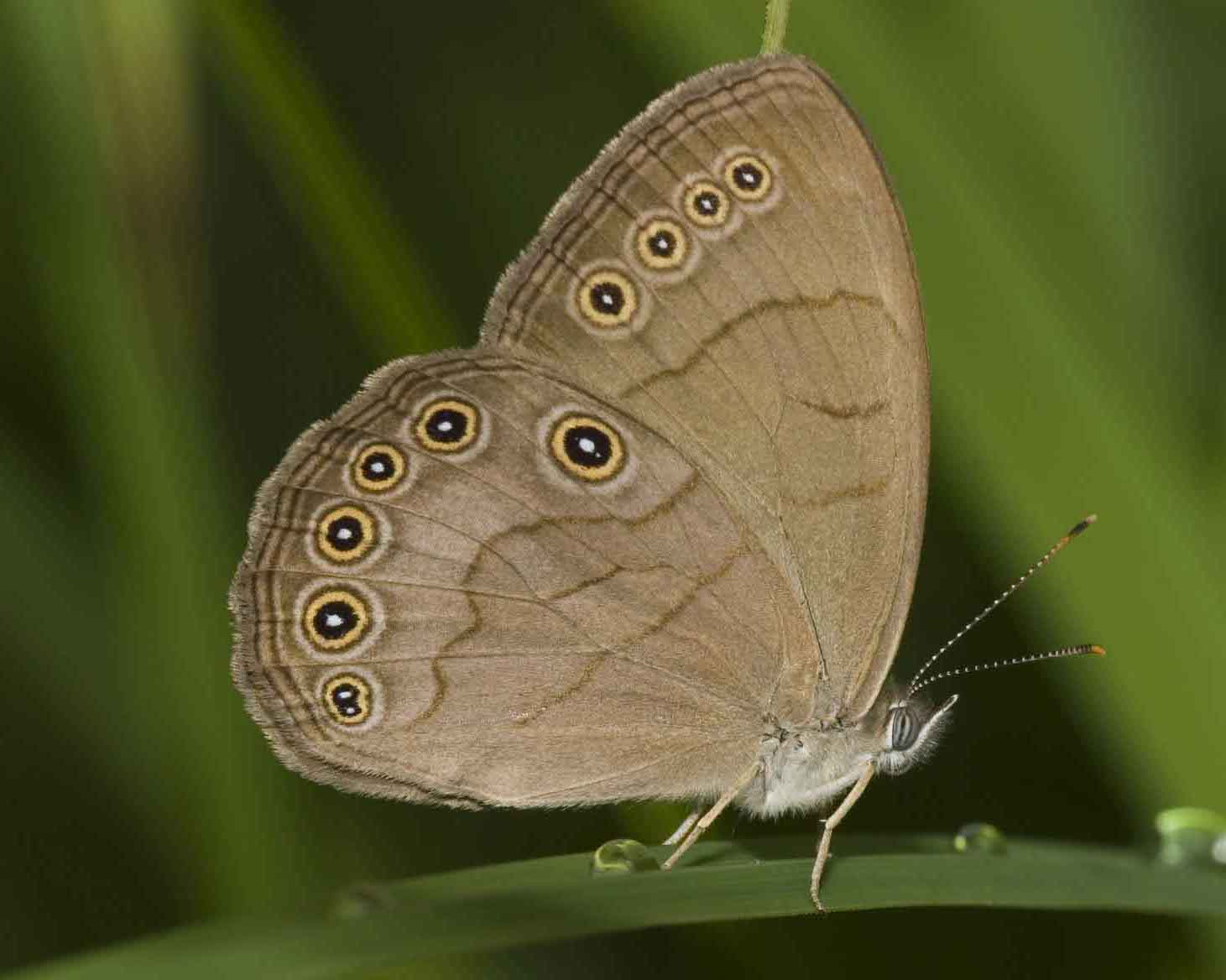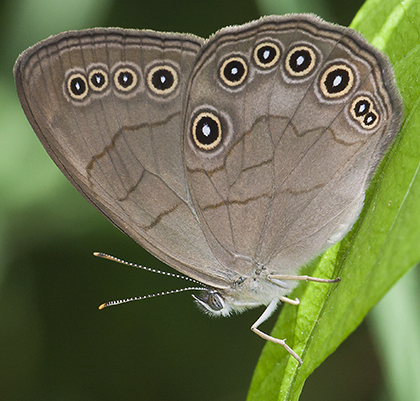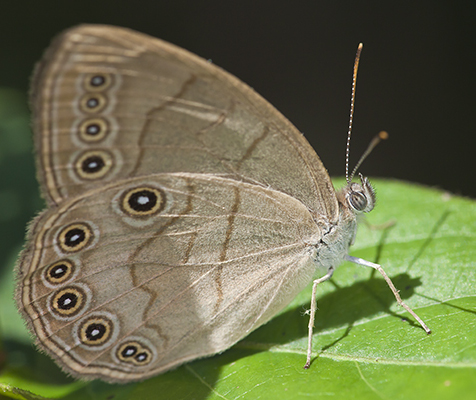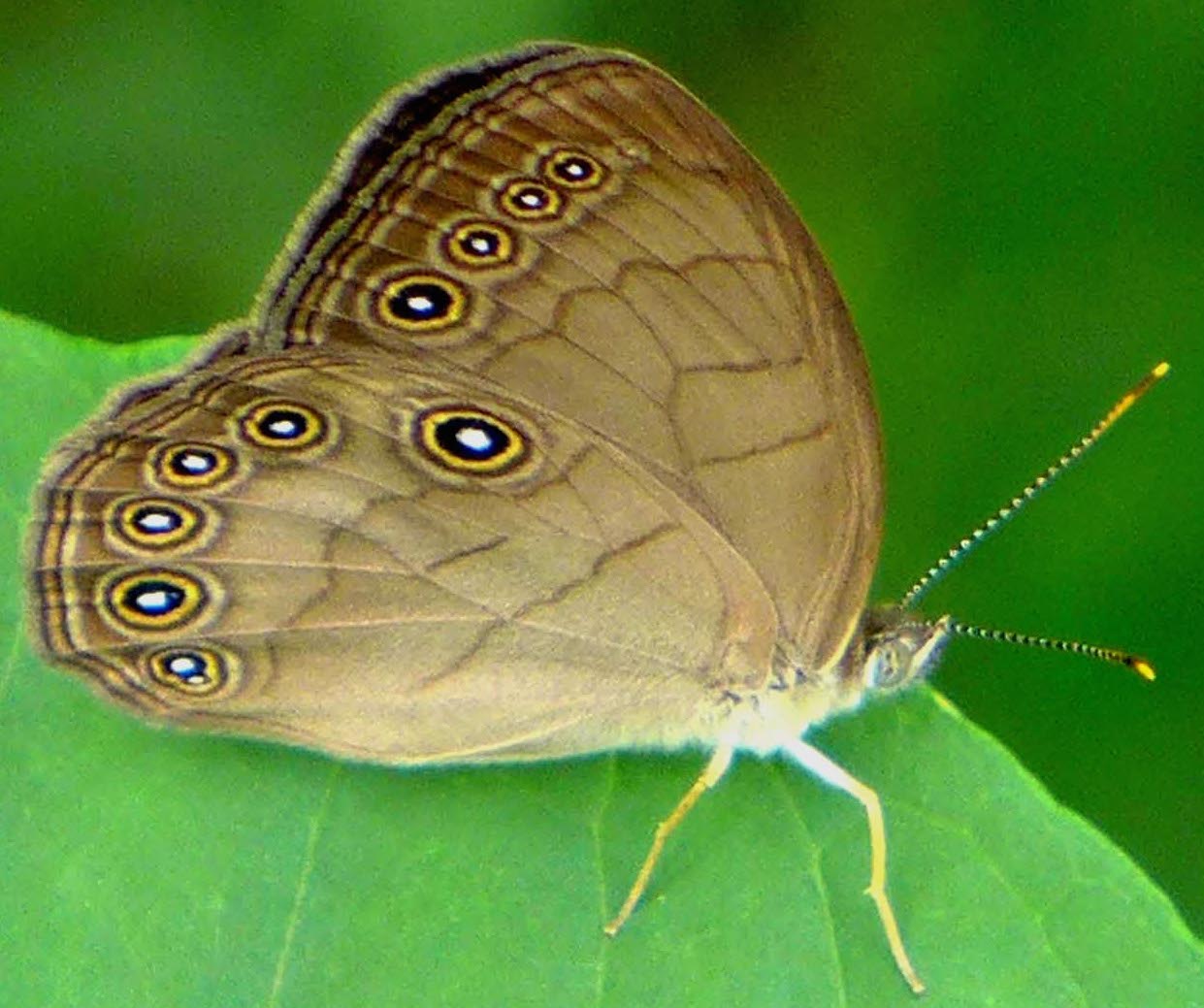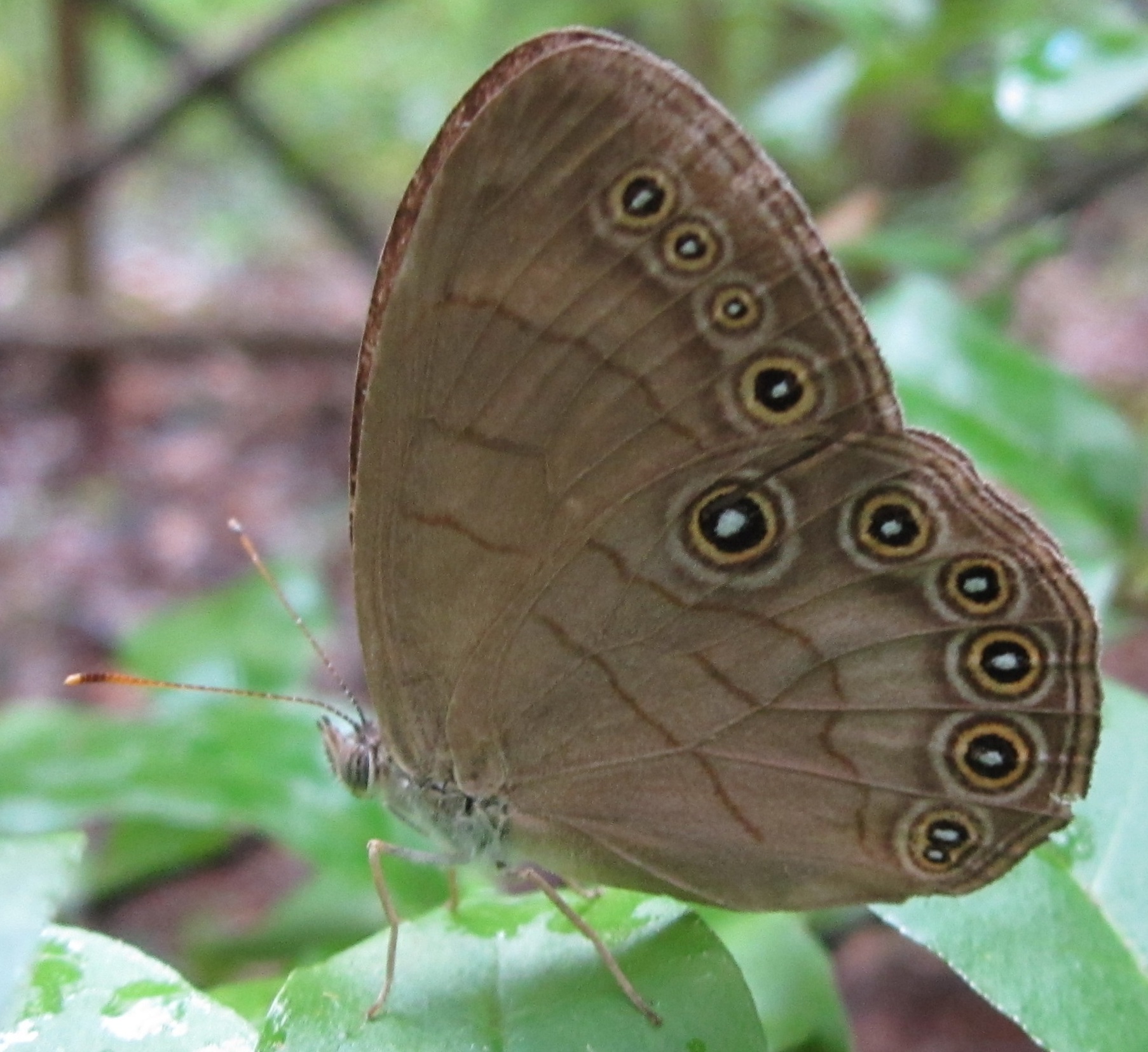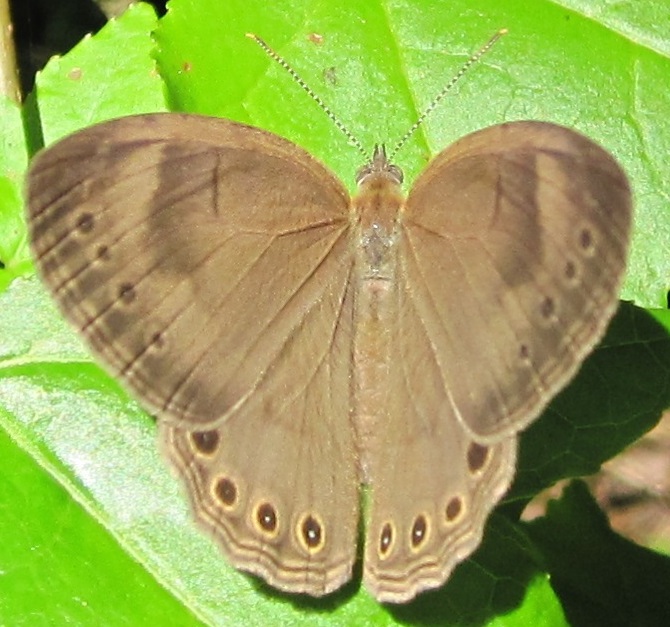|
| Common Name | Appalachian Brown by Betty Anderson
[View PDF]
 Click to enlarge Click to enlarge
[Google Images] GBIF [Global Distribution ] BoA [Images ] iNaturalist |
| Scientific Name | Lethe appalachia
|
| Link to BAMONA species account. |
| Map | Click on a county for list of all database records for the species in that county.
 |
| Distribution | DISTRIBUTION: Throughout the Mountains and Piedmont, and in the southwestern and northern portions of the Coastal Plain, including the Sandhills. Seemingly absent in much of the central and eastern Coastal Plain, despite much suitable habitat there, and despite its presence in the majority of Coastal Plain counties in SC. We have no data on the Dare County record and do not know if there is currently any population still there.
|
| Abundance | ABUNDANCE: Uncommon to locally fairly common, but restricted in habitat in the Mountains and Piedmont; rare in the Sandhills, though common in a few wetlands at Fort Liberty. Rare elsewhere in the northern and southwestern Coastal Plain, except locally numerous near the Roanoke River. Perhaps absent in most of the eastern 2/3rds of the Coastal Plain.
|
| Flight | FLIGHT PERIOD: Two broods. The overall flight in each province is roughly from early May (rarely in late April) to very early October, with the gap between broods downstate in late June. There is a dip in the flight data in the Mountains in early August, much later than the gap in the Piedmont, a confusing situation (as a Mountain flight gap should only be a few weeks later, not 5-6 weeks later, than a Piedmont gap). Peak numbers are from late May to early June, and again from early August to mid-August.
|
| Habitat | HABITAT: Fairly restricted habitat; favors shaded or semi-shaded woodland pools or wet places with a good growth of sedges. Habitats can include marshy beaver ponds, floodplain pools, shaded bogs, or wet spots along woodland edges. Adults may be seen along trails or dirt roads near such pools.
|
|
| | Plants | FOOD AND NECTAR PLANTS: Various sedges, primary Carex species, are the foodplants. The adults seldom nectar; as with most "satyrs", they feed on sap, dung, decaying fruit, moisture, etc.
|
| Comments | COMMENTS: This is a rather local, or at least habitat-restricted, species. Although it may be found by accident, it is seldom found in most places where an observer looks for butterflies, such as wooded borders, powerline clearings, savannas, and weedy fields. The Coastal Plain range in NC is still poorly known, though a number of new county records have been made lately. The fact that it occurs in many counties in the central and lower Coastal Plain of SC suggests that it ought to occur over much of the NC Coastal Plain. However, observers have covered bottomlands and swamps across most parts of the Coastal Plain, with little or no success. I spent many days in bottomlands in Johnston County in 2000 and failed to find the species, though Mike Turner finally found the species in this county in 2016. Thankfully, both Shay Garriock and I found the species at several sites in Columbus, Bladen, and Robeson counties in 2007; in fact, I saw them at several sites along the Lumber River in the last county. Steve Hall and I found them frequently in the Roanoke River floodplain in 2012, adding new county records for Bertie and Martin counties. I saw one at Moores Creek National Battlefield (Pender County) in 2015, extending the range slightly eastward toward the southern coast.
|
State Rank | S4 | | State Status | |
Global Rank | G4 | | Federal Status | |
| Synonym | Satyrodes appalachia
|
| Other Name | Appalachian Eyed Brown
|
|
|

 >>
>>
